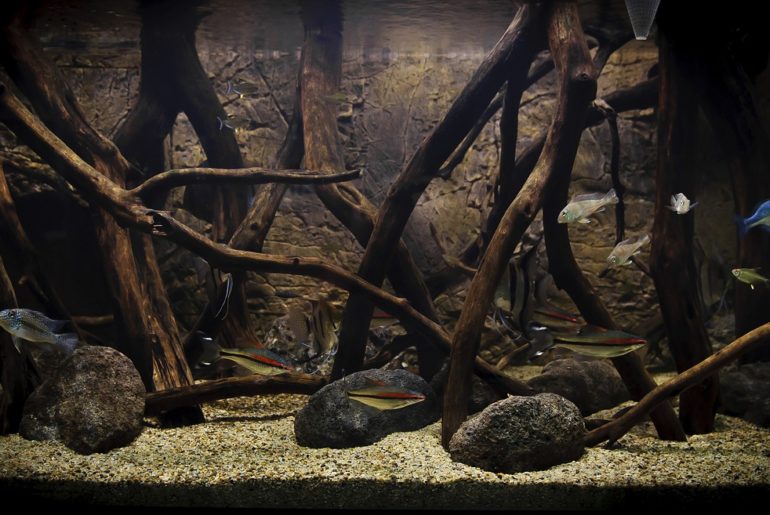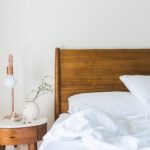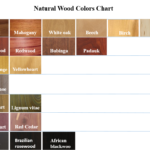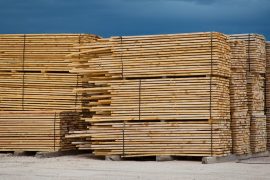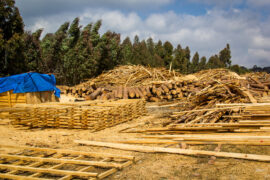What is the aquarium wood? Can all types of wood be used for the aquarium? What are the types of aquarium wood? There are questions like these for anyone who intends to use wood as a new element in their aquarium. If you also have a plan to add wood to your aquarium, this article has all the information you’ll need.
What Kind of Wood can be used for the Aquarium?
You have probably seen some people use the wood and the roots of trees in the aquarium. In fact, any prepared wood that can be used for aquariums is called aquarium wood. These woods come in different shapes and sizes. Some of the woods are safe for freshwater, some of them are just safe for saltwater aquariums, and some of them are unsafe for fishes! In other words, you can’t use any wood for the aquarium. The aquarium wood must have high density and be 100% dry. You also need to prepare the wood before using it in the aquarium.
Safe Woods For Use in An Aquarium:
Fruit trees are usually safe for the aquarium. Not all of them, of course. Common safe woods for aquariums are:
- Alder wood
- Applewood
- Beechwood
- Birchwood
- Cherry wood
- Hawthorn wood
- Heather wood
- Oakwood
- Pearwood
- Sycamore wood
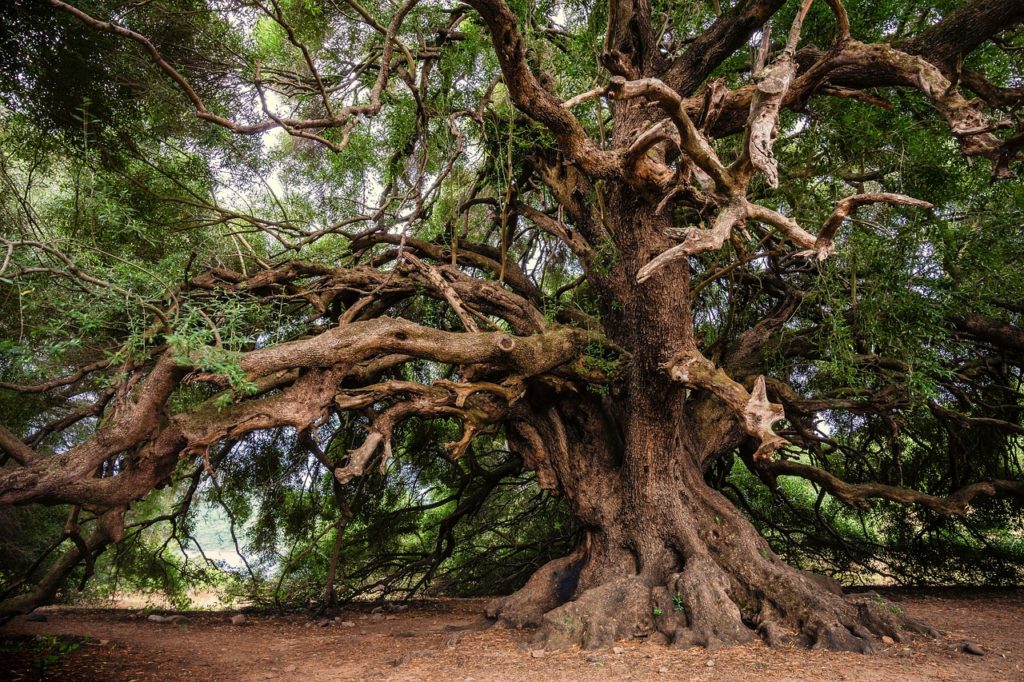
Unsafe Woods to use in an Aquarium
In general, evergreen/coniferous wood should not be used in the aquarium. But in particular the following woods are not safe for use in the aquarium:
- Cedarwood
- Cypress wood
- Grapevine wood
- Horse chestnut
- Lilac wood
- Pinewood
- Spruce wood
- Walnut wood
- Yew wood
- Toxic wood
Benefits of Aquarium Wood
The benefits of adding woods to the aquarium can be considered in two ways:
- Aesthetic
- Biologically
Let us examine each individually.
Aesthetic
Wood in the aquarium can really change the look of your tank and give it a more beautiful look. Adding woods to the aquarium has quite obvious aesthetic benefits. Water can brighten the color of the wood and highlight the grains and texture of the wood. Seeing the beautiful fish among the tree branches can create a great image.
Lichtenberg Wood Burning eBook

Download Lichtenberg Wood Burning eBook
One of the modern techniques for creating wooden artwork is called Lichtenberg wood Burning. In this eBook, we are going to introduce this newfound art to you.
This technique is known with some different names such as Lichtenberg wood burning, fractal wood burning, and electricity wood art.
This technique should not be confused with wood burning art or pyrography. The art of pyrography on wood is the art of creating motifs and designs by burning with hot metal tools on objects such as wooden surfaces.
Lichtenberg burning is a wood-burning technique for creating designs with electricity.
This eBook is a comprehensive guide on Lichtenberg Wood Burning. All you need to know for Lichtenberg Wood Burning is here.
This is a limited-time offer, order now to get access to the future eBook releases.
Biologically
In addition to aesthetic, there are other significant benefits too. Aquarium wood can provide a natural place for fish to live and hide. It can serve as a spawning site for egg-laying species of fishes.
Wood can even provide a food source of algae and small microscopic animals collectively known as periphyton. Also, help you to achieve the correct water parameters for your species of choice.
Where to Find Aquarium Wood?
There are various types of aquarium wood at stores and retailers. as well as you can find them in your own garden which is suitable for decorative use in your aquarium. Buying from a specialist retailer will ensure that the wood you choose is suitable for the purpose.
But if you take a little time to research suitable species of wood you may be able to collect wood from your own garden. However, the wood must be prepared before it can be used for the aquarium.
Types of Aquarium Wood
It is noteworthy that fish tank wood requires curing and submersion. Sometimes nature has already prepared them for us, and sometimes we have to do it ourselves. However, aquarium wood types include:
Bogwood
Bogwood is a material from trees that have been buried in bogs and preserved from decay by the anaerobic bog conditions, sometimes for hundreds or even thousands of years in a bog. Usually, bogwood is stained brown by organic matter or tannins present in the bog. It comes in many shapes and sizes and is often used as an attractive natural looking ornament in the aquarium.
Certainly, bogwoods are the most commonly used type of aquarium wood anywhere in the world. In fact, bogwood is a wood that discolored by the tannins found in the bog over this lengthy period. Tannins are organic materials that will leach into your water giving it a tea-colored and it is perfectly harmless.
Bogwood comes from several kinds of wood including oak wood, pinewood and yew wood with colors varying from a rich reddish-brown to jet black. Although pine and yew are not safe for the aquarium, their bogwoods are completely safe.
Mopani Wood
Mopani wood is sometimes known as a bogwood but it has never been anywhere near a bog! Mopani wood comes from the Mopane tree which originates from Sub Saharan Africa.
This wood due to its high density and it’s attractive appearance has gained popularity as a heavy decorative wood not just in the aquarium but also as a base for lamps and wooden sculptures. This wood before being offered for sale in retail aquatic stores is sandblasted removing all of its bark.
Other Types of Aquarium Woods:
- Redmoor Wood
- Sumatran Driftwood
- Marsh Root
- Azalea Root
Using Driftwood In the Aquarium
Driftwood like bogwood can be used for aquariums. It is wood submerged in water for many weeks or years usually in a river, sea or pond. For more info about driftwoods see how to make a driftwood sculpture.
What is Aquarium Driftwood?
Aquarium driftwood is a piece of wood that has been washed by tides, waves, or winds onto the beach of a lake, sea, or river.
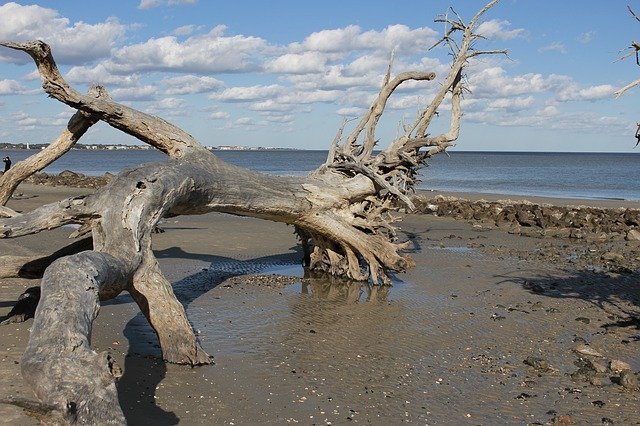
You have probably seen them by the seashore. Environmental factors have changed their texture and they are almost ready for use in the aquarium. It is a form of marine wreckage, ruins, seaweed, or marine vegetation.
The driftwood floats on water when placed in the aquarium. It sinks to the bottom by soaking in the aquarium over a period of time. You can attach a piece of slate to the driftwood with a stainless steel screw. After it sinks, you can cover the slate with gravel, rocks, or aquatic plants.
Types of Aquarium Driftwood
- Savannah Root (driftwood that sinks by itself and it will make a perfect addition to any aquarium)
- African driftwood (It is self-sinking because it is hollow, thus the water helps it sink. This type of driftwood is a bit pricier than normal driftwood)
- Malaysian driftwood (will work perfect if you want to attach aquarium plants because it does not float so it will also look great in any aquarium)
- Manzanita Driftwood (Has some of the most unique shapes and is more resilient to wear than other types)
Preparing Wood to use in an Aquarium
You need to prepare whatever kind of wood you find in nature before using it in the aquarium. There are some tips on choosing the right wood. Remember to collect wood from rural or forest areas and make sure you have permission to do so.
Look for dry woods with no mold, rot or fungus. The best time to collect wood is in late summer. During the summer the larger trees drop branches to protect themselves from dehydration. These branches are usually dry and have dropped recently so haven’t started to rot.
If you choose fresh-cut wood you must leave them for a couple of weeks to remove any remaining sap and then soak them. Soaking helps the woods to sink and the bark to peel off more easily.
Then boil the woods every two hours for two days and use clean water to boil each time and drain the water thoroughly. Do this for one week. If you use driftwoods, boil them in water for 24 hours to eliminate any bacteria.
Conclusion
In this article, we introduced a variety of aquarium woods. You have to buy them or collect aquarium wood from nature. Remember, when collecting wood, avoid the unsafe woods mentioned in this article.
There is an important point when buying aquarium wood: Some bogwood is offered for sale as ‘pre-soaked’. These woods are actually quite rare due to the additional time and expense required. It is best to assume that they have not been pre-soaked and treat it yourself to obtain the desired results.

